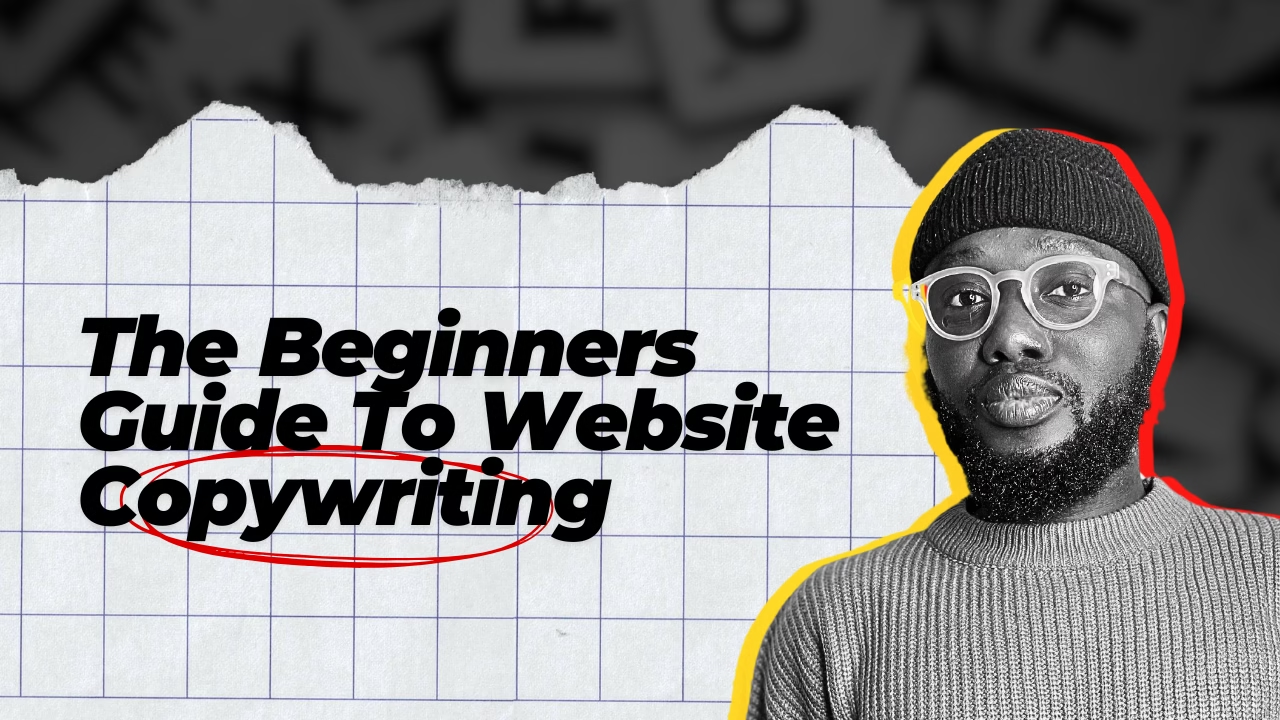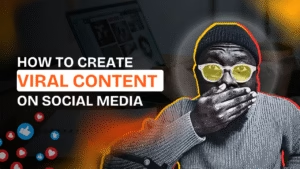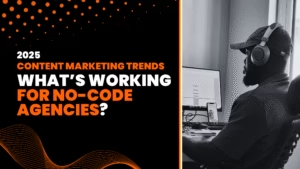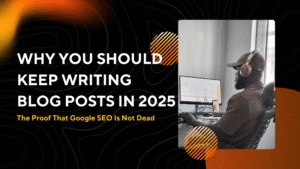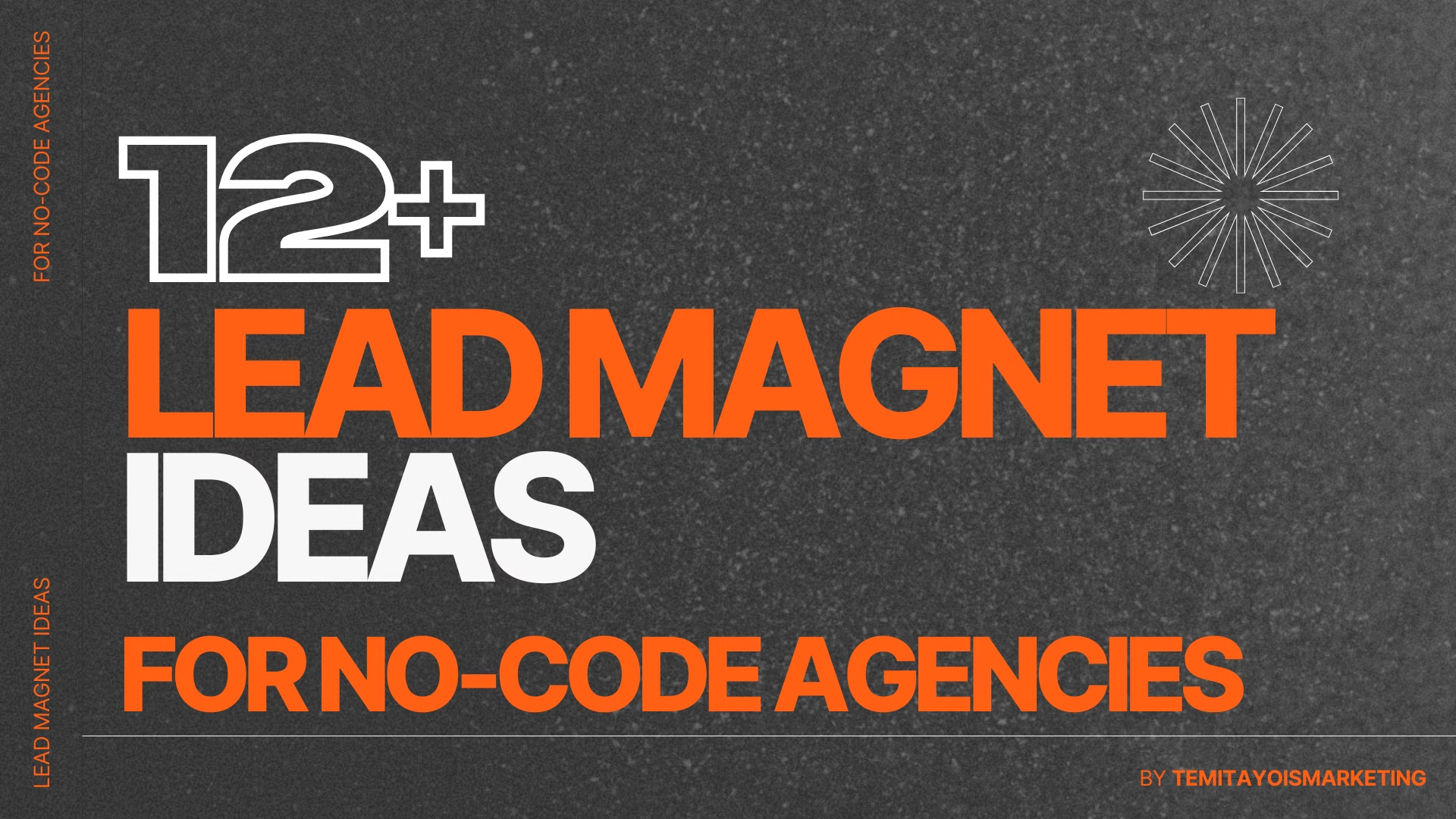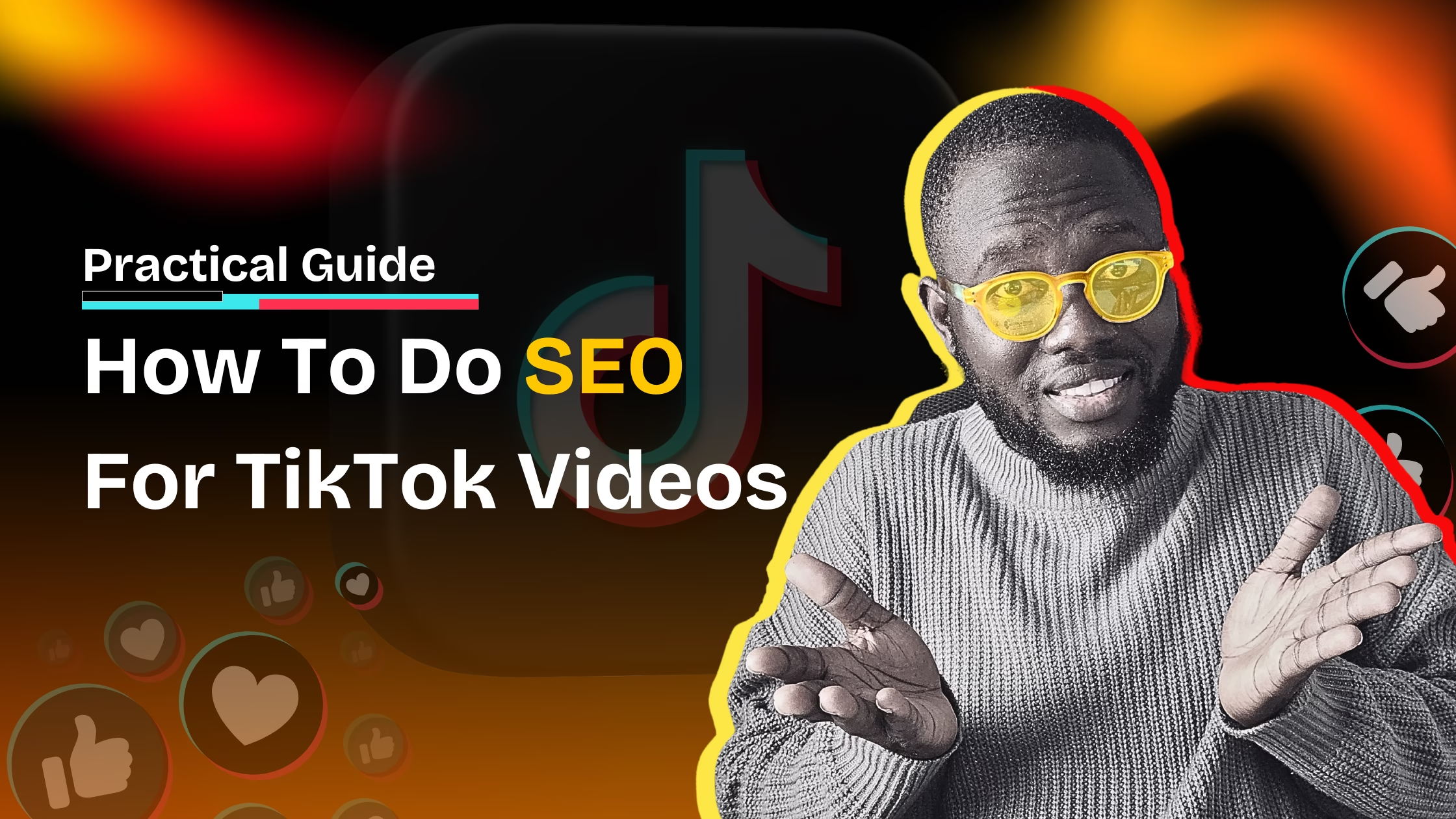Introduction
According to Forbes, the average internet user judges your website in as little as 50 milliseconds, meaning you have very little time to convince the customer of your prowess, your unique offer, and what separates you from your competitors.
This automatically means the success of your website and your online presence depends on three interwoven and essential factors, the website design (or user interface), the user’s experience with the website and the copy or words written on the website
In this post, we’ll focus mainly on the words- or website copy and how to do it effectively to drive customer action.
What is website copywriting?
Website copywriting is the process of writing content for web pages.
This includes writing copy or content for home pages, sales pages, landing pages, product pages, and blogs, aiming to drive page visitors to take some desired action.
Website copywriting is similar to traditional copywriting, but different in that it often focuses on generating leads which are potential customers for businesses.
How To Get Started With Website Copywriting
Web copywriting is a multifaceted field, and often requires knowledge of other digital marketing fields.
Some common fields that contribute to a successful website copy include:
Search engine optimization (SEO), which helps your web copy gain organic visibility
User experience design, which ensures visitors to the pages have a seamless navigation experience and most importantly
Persuasive language and writing, that influence the website visitors’ behaviour.
Related Topic: How to write SEO copy and content for websites (Coming Soon- Subscribe To Get Notified)
Work With Temitayo
To get me working on your freelance, SaaS or Agency website copy, send a message or schedule a meeting here
The Process: Writing Effective Website Copy
Every website copywriter has a detailed process for writing effective copy, and this process often varies depending on what type of page is being written, however, we can summarize all processes into the major steps listed below
- Audience Research
- Topic/Keyword Research
- Competitor Research
- Page or Copy Goals
- Creating The Copy Angle
- Goal Tracking & Analytics
Step 1: Audience Research
Understanding your audience- who your copy is meant to address- is the foundation of effective website copy.
I like to start by identifying the target demographics, which often include my target audience’s age, interests, location, and behavioural patterns.
Surveys, product feedback, and social media interactions can help you better understand your customers’ pain points, desires, and motivations. This knowledge can then be used to develop an in-depth audience persona and write web copy that addresses their needs.
The outcome of your research helps you shape a copy that resonates with visitors, encouraging them to take action.
Related Topic: How To Do Audience Research & Audience Research Tools
Step 2: Topic/Keyword Research
Doing proper keyword research will help your website copy align with what your audience is actively searching for.
I use SEO tools like Google Keyword Planner in Google Ads, Ahrefs, Ubersuggest Chrome Plugin, Google Trends and SEMrush to find relevant keywords with good search volume and manageable competition.
I try to create primary and secondary keywords that match the target audience’s intent, as well as related phrases or long-tail keywords that might give me a comprehensive strategy.
The aim is not only to rank on search engines but also to keep the content aligned with your audience’s search habits
Related Topic: Website Copywriting: How To Do Keyword Research For Seo (Coming Soon- Subscribe To Get Notified)
Step 3: Competitor Research
Checking out your competitors’ websites to understand how they’re positioning their brands, targeting keywords, and engaging their audience often helps with writing your website copy.
Your competitors can be other pages ranking for a keyword you wish for your web copy to rank for, or other brands offering the same product/service as you
Look at their tone, the web content structure, their messaging, and any unique angles they’re using.
Try to pay attention to what resonates with their audience and where they may be missing the mark.
This analysis may also help you identify opportunities to differentiate your copy, improve upon your competitor’s weaknesses, and offer something unique.
Related Topic: Website Copywriting: How To Do Competitor Research (Coming Soon- Subscribe To Get Notified)
Step 4: Page Goals/Copy Goals
The goals you have for your web pages will affect your website copywriting, which affects your call-to-action (CTA).
Each web page ultimately should serve a specific purpose, so defining clear goals is crucial.
Are you aiming to inform, convert, engage, or guide users to another part of the site?
I like to outline the primary and secondary goals for each page.
For instance, the goal of a landing page I write for a SaaS client may be to encourage sign-ups or tryouts, while a blog post may aim to drive engagement, shares or redirect users to the landing page to sign-up for the offer.
Step 5: Finding Your Content/Copy Angle
Your angle is what sets your web copy and content apart and makes it compelling to readers-which means it’s highly dependent on a good audience & competitor research.
Consider what unique perspective or value your brand or your page brings to the topic/audience.
It could be a fresh approach to a common problem, a better explanation of a concept, an unexpected benefit, a real-life experience with end results or an authentic brand voice.
Your angle is essential what helps you captivate the audience, and since search engines often watch engagement signals, your angle also contributes to how highly your page ranks organically.
I like to use storytelling elements, explainer videos, tables & charts, emotional triggers, and specific benefits of my client’s product & service.
This approach will help your copy feel original, engaging, and memorable.
Step 6: Goal Tracking & Analytics
Once your copy and web pages are live, it’s essential to track its performance against your goals to measure effectiveness.
You can set up specific KPIs, and tracking parameters (such as form submissions, click-through rates, or average time on page) to assess if the copy is meeting its objectives.
I like to use analytical tools like Google Analytics -GA4, Hotjar, Hubspot Analytics and in-platform metrics to monitor traffic, engagement, bounce rates, and conversion rates.
Analyzing these metrics regularly allows you to optimize and refine the copy over time, ensuring it continues to drive results.
Related Topics: Top Website Key Performance Indicators And How To Check Them
Other Skills/Services Required For Effective Website Copywriting
Aside from search engine optimization (SEO), which helps your web copy gain organic visibility, user experience design, which ensures visitors to the pages have a seamless navigation experience, and persuasive language and writing, what other disciplines are required of a website copywriter?
A. Storytelling Skill:
This centres around your ability to create relatable narratives around products, services, or brand values and make content more engaging and memorable, helping to foster a deeper connection with the audience.
B. A/B Testing:
This is the ability to test different copy elements, such as headlines and CTAs, which is important to understand what resonates best with the audience.
C. Research Skills:
Website copywriters must be proficient in conducting audience research, topic research, and gathering reliable data to make the content more compelling and relevant.
Breaking Down The Web Page: Sections & Writing Website Copy For Them
The sections you will require when writing and how you should arrange them depend entirely on what kind of web page copy you are writing.
For example, on a copy for a highly-priced SaaS tool, you may follow the hero section with a features & benefits section,
when writing for an industry requiring a high level of trust such as fintech, you might immediately follow the hero section with social proof, and,
for a portfolio website, you may simply follow the hero section with the services section.
Below we have listed some common web page sections you’ll need to write copy for:
Work With Temitayo
To get me working on your freelance, SaaS or Agency website copy, send a message or schedule a meeting here
1. The Hero Section
The hero section is the first section of your website that loads up for the user, making it vital for creating a good first impression
A majority of user spend over 75% of their time on a website on this section, which highlights the significance of a clear & concise copy.
Related Topics: Copywriting Secrets For Your Website Hero Section & Examples
2. The About Section
Nearly 52% of visitors want to see “About Us” information as soon as they reach a homepage, making it essential for building an initial connection and establishing credibility. (Graffiti9)
This page is often meant to contain an overview of the brand, the business story, the vision and the mission statements.
Related Topics: How to write the “about us” page (Coming Soon- Subscribe To Get Notified)
3. The Features and Benefits Section
47% of website visitors will go straight to a company’s products or services page before viewing any other site section. (GetResponse)
This section contributes to the sales process and is meant to highlight the key features, unique selling points, and benefits of the brand, product or services.
Related Topic: What Is The Difference Between Features and Benefits? (Coming Soon- Subscribe To Get Notified)
Related Topic: Copywriting For Beginners: Writing Features & Benefits
4. The Services Section
86% of visitors want to see information about a company’s products and services on their homepage. (Ko Marketing)
This copy for this section should focuses on describing the main services offered, often with icons or images.
5. The Testimonials/Reviews Section
27% of your website visitors look for testimonials (go-globe), with 84% of people trusting online reviews as much as personal recommendations (inc.)
This section displays customer testimonials, reviews, or case studies to build the brand/page credibility.
Related Topic: Social Proof Marketing Secrets: How To Create Testimonials and Reviews Content
6. The Pricing Section
23% of visitors look for pricing details when they arrive on a page, making your pricing page/copy vital (go-globe)
This section should have details about different pricing plans or packages, often with a comparison of features per plan.
7. The Call-to-Action (CTA) Section
This section aims to encourage a specific action, such as signing up, requesting a demo, or starting a free trial.
A well-placed and well-written CTA is crucial for conversions, with research indicating that 70% of small business websites lack a clear call to action (Forbes)
Related Topic: 20 Best Practices For Creating and Writing Your Website Call To Action (CTA) (Coming Soon- Subscribe To Get Notified)
8. The FAQ Section
Writing this section is aimed at answering common questions, and helping visitors find information quickly.
Many visitors prefer self-service options, with 81% of people attempting to solve issues independently before reaching out to customer support.(Harvard Business Review)
Related Topic: Creating and Writing Frequently Asked Questions For Your Website (Coming Soon- Subscribe To Get Notified)
9. The Portfolio/Case Studies Section
This section helps credibility by showcasing past work, projects, or case studies to demonstrate expertise, especially in B2B contexts where potential clients are often looking for proven expertise.
Related Topic: How To Write A Case Study Web Page- Free Examples & Formats (Coming Soon- Subscribe To Get Notified)
10: The Blog/Resources Section
The blog section offers educational content, articles, or guides related to your industry. Websites that regularly publish high-quality content show 55% more traffic than websites that don’t, making it invaluable for lead generation and SEO.
11: The Contact Section
This section often contains very little information since the aim is to get the contact to send a message- but it can be help with tracking conversion intent.
Usually, it contains the contact form, and/or details on reaching customer support.
12: The Newsletter Signup/Lead Capture Section
Often a part of the footer section, the lead capture section Invites the page visitors to subscribe to a newsletter or get updates, often in exchange for a resource or discount.
13: The Footer Section
Contains links to important pages (privacy policy, terms), social media icons, and sometimes a secondary CTA.
Work With Temitayo
To get me working on your freelance, SaaS or Agency website copy, send a message or schedule a meeting here
